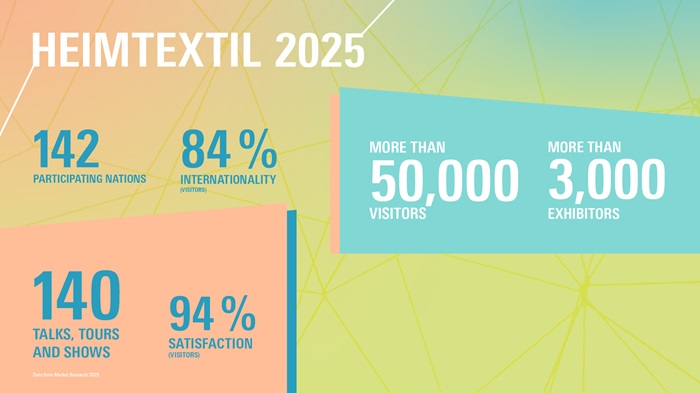FW
The civil war in Syria has damaged its textile and garment industry. Many manufacturing facilities are shut. Interruptions to transport, logistics, electricity and water supply have also affected production and added to costs. Around 70 per cent of production facilities have been destroyed. There is a shortage of cotton because of damage to agriculture. Quite a few textile manufacturers have moved to Egypt or Turkey.
In an attempt to revive their war-devastated industry, Syrian manufacturers, trade associations and international buyers are holding a three-day trade fair, the Syrian Fashion Fair, in Beirut. They hope to secure sizeable new export orders for children’s wear and lingerie.
However, the war has also had some beneficial effects. The decrease in the value of the Syrian pound has made products highly competitive and labor cheaper. The cancellation of the Turkish Free Trade Agreement in 2012 means Syrian manufacturers are no longer competing with cheaper and often higher quality Turkish imports.
Textiles was the cornerstone of Syrian export in the years leading up to the crisis, as a part of its efforts to diversify the country’s economy away from oil. But three years of conflict have cost the industry dearly.
Munich Fabric Start is being held from February 4 to 6, 2014, in Germany. This is a bi-annual trade show for German designers, manufacturers and suppliers of fashion fabrics, accessories and garments. The show presents the latest textile innovations and industry trends for Spring/Summer 2015. This time it’s hosting around 900 exhibitors from 35 countries presenting around 700 fabric manufacturers and 190 accessory makers. It is divided into eight areas and is showcasing a range of textiles, accessories and trims.
This edition’s theme is Haute Sporture, where high-tech textiles meet clear styles and the high art of couture meets sporty influences. Blue Zone focuses on denim with 70 international weavers, finishers and washers showing the latest denim innovations, washes and finishes.
Alongside skin-tight jeans some new styles such as jeans with a pleated waistband will also be presented. The diverse repertoire consists of contrasts from loose, trashy, baggy denim looks juxtaposed with accurate, slender silhouettes, combined with repaired patching, bleaching, coded statements, laser motifs, chic biker styles and lots of stretch denim.
The show’s S/S 2015 trend areas will characterise the play of opposites between denims and flat woven fabrics.
www.munichfabricstart.com/
Cellulosic fiber production is set to grow rapidly in the next few years. Cellulosic fiber production worldwide rose by 11 per cent in 2011. Over 85 per cent of the increase in global cellulosic fiber capacity between March 2013 and December 2014 will take place in China and India alone. Chinese capacity will represent 64.2 per cent of the global total while India will account for 9.9 per cent.
Faced with soaring raw cotton prices in 2011, many textile and apparel producers switched to manmade fibers. Demand for cotton fell by 7 per cent in the 2011-12 season and rose by only 2.3 per cent in the 2012-13 season. In China alone, cotton demand is forecast to fall by 0.6 per cent as the industry continues to switch to alternative fibers because domestic cotton prices remain high relative to world cotton prices.
Demand for cotton will be hindered because of higher prices compared to substitute fibers. Cellulose is a fibrous material of plant origin and the basis of all natural and manmade cellulosic fibers. Natural cellulosic fibers include cotton, flax, hemp, jute, and ramie. The major manmade cellulosic fiber is rayon, a fiber produced by regeneration of dissolved forms of cellulose.
The arctic vortex across the United States has had a negative impact causing rare winter power interruptions for US spinning mills in North and South Carolina, including Frontier Spinning Mills, the second-largest yarn producer in the United States. The mills had to stop operations on requests from their power supplier, Duke Energy.
American cotton traders, ginners and buyers have already been dealing with tight supplies and the late processing of a small crop in the world's top exporter. Now with the spinning mills forced to stop work has affected spinning of about 2,000 bales of cotton. Sources say that while the figure represents just a fraction of Frontier's annual demand for some 940,000 480-lb bales, but it also means opportunity lost including loss of production.
Duke Energy, the nation's largest power supplier twice had to ask industrial customers in the Carolinas to curtail power usage this month as snow and cold continued to make an impact. Duke Energy witnessed a record energy usage on January 7, 2014 of 20,246 megawatt-hours, surpassing December 2010's record of 18,985 megawatt-hours.
Experts say, though the impact of power cut on the textile industry is minimal at the moment, the blow comes at a time when companies around the world are looking at setting up shop in the United States, due to lower-cost and reliable energy coupled with shifting trade flows and improving technology.
www.frontierspinningmills.com
Nearly 180 yarn and fibre exhibitors from the Mainland China region will participate at the Yarn Expo Pavilion, a designated fibre and yarn exhibition area within Intertextile Shanghai Apparel Fabrics – Spring Edition 2014 from March 3 to 5, 2014, providing opportunities for suppliers around the world to get a glimpse of products on offer. During the first 11 months of 2013, China imported 1.93 million tons of cotton yarn worth 6.27 billion dollars, up over 40 per cent from the previous year.
The pavilion, located in Hall 4 at the Shanghai World Expo Exhibition and Convention Center, will feature the foremost yarn makers from Mainland China, HongKong, India, Korea, Pakistan, Portugal, Singapore, Switzerland,Turky and Uzbekistan. A wide variety of cotton yarns and innovative man-made fibres featuring advanced technology will be on display. Concurrent fringe activities – including the trend area, a series of interactive seminars and fashion shows – will provide more insights into trends and market developments in the yarn industry.
In addition to relocating from Beijing to Shanghai, Yarn Expo Pavilion will now be held in the first half of March, which is the peak spring sourcing time in China. This change of date and venue offers more opportunities for both exhibitors and visitors, and strengthen the fair as a leading platform in one of the world’s fastest growing marketplaces for fibres and yarns.
Yarn Expo Pavilion is organised by Messe Frankfurt (HK); the Sub-Council of Textile Industry, CCPIT; China Cotton Textile Association; China Wool Textile Association; China Chemical Fiber Association; China Bast & Leaf Fibres Textiles Association; and China Textile Information Centre.
www.messefrankfurt.com.hk
Acting Chairman of the Joint Apparel Association Forum (JAAF) Noel Priyatilleke has requested the government to introduce a transparent single digit VAT system terming it to be ‘an absolute necessity for the economy to grow’. Addressing the post business session after the 10th Annual General Meeting of JAAF, Priyatilleke said that if not for the introduction of the suspended VAT scheme, due to the complexities attributed to VAT administration system including refund mechanism and double digit rate, the apparel industry has not been able to perform.
“However, even today despite the presence of SVAT system, further reforms are recommended in the larger interest of the economy. Your attention is requested in this regard,” Priyatilleke said addressing the Chief Guest at the event, Secretary to the Treasury, Ministry of Finance and Planning and Economic Development, P B Jayasundara.
The appeal for VAT reductions comes at a time when JAAF has announced that in the calendar year 2013, Sri Lanka’s apparel exports had reached the highest ever level of 4.3 billion dollars (Rs 28,152 crores) compared with 3.8 billion dollars (Rs 23,772 crores) in 2012. Priyatilleke pointed out that now the challenge ahead is not only to sustain this business but also to grow because the government expects Sri Lankan apparel, tea and rubber to fetch a turnover of 10 billion dollars (Rs 62,560 crores) by 2016; and Sri Lankan apparel has also to be among the first ten apparel exporter countries of the world by 2020.
Jaafsl.com
The International Apparel Federation (IAF) and the International Foundation of Fashion Technology Institutes (IFFTI) have decided to jointly put in efforts to establish a better connect between business and education in the fashion sector. IAF secretary general Han Bekke and IFFTI secretary Commodore Vijay Chaturvedi recently signed a memorandum of cooperation in Tokyo during IFFTI’s 16th annual conference.
IAF’s education committee of representatives from the industry is chaired by Souraya Bouwmans, Dean of Amsterdam Fashion Institute, who is also member of the Executive Committee of IFFTI. Both institutes have reached a consensus on working closely for IAF’s awards program. IFFTI members will promote the opportunity of participating in the IAF student award to their graduating students.
Students will enter the competition with their graduation work in the categories design, product development and branding. The prize will be a half year fully paid internship at a fashion company.
They, together will also organise the IAF designer award. IFFTI members will invite alumni to apply for the award and to nominate one designer not already internationally known but nationally strong, with a maximum of 5 years of professional experience. The winner of the IAF Designer Award is given a fully paid visit to the IAF World Fashion Convention the next year. There the winner can present his or her winning collection on the catwalk to representatives of industry and press.
IAF is the world’s leading federation for apparel manufacturers, their associations, apparel retailers and the supporting industry. Whereas, IFFTI is an international body comprising of leading international fashion universities and schools focused on helping its members in upgrading their programs, assist in bringing about sharp professionalism in the structure and operation of the fashion industry in their respective countries.
Iafnet.eu
Bangladesh garment exports to non-traditional markets have grown more than four times in the last six years. In 2008, garment exports to destinations other than the EU stood at $800 million and in 2013 the figure crossed $3.5 billion.
Along with its traditional export destinations --the US, EU and Canada -- Bangladesh is focusing on new destinations like India, China, Russia, Japan, South Africa, Turkey, South Korea, Malaysia, Australia and New Zealand. The country is also exploring the possibility of exporting to Nigeria, Saudi Arabia and Chile by strengthening the South-South Cooperation. The South-South Cooperation is a broad framework for collaboration among countries of the south.
The Bangladesh government is enhancing skills to boost export of skilled manpower. Skill development can promote overseas employment of Bangladeshi workers.
The Bangladesh government in 2009 had introduced a financial package to encourage garment manufacturers to explore new destinations. Under the scheme, the government gave 5 per cent cash incentive to exporters in fiscal 2009-10, 4 per cent in fiscal 2010-11 and 2 per cent in fiscal 2011-12. Exporters receive a 2 per cent cash incentive for exporting to new destinations.
China will no longer support a strategic reserve for cotton. This means cotton production and cotton-related industries will no longer be shielded from the forces of the free market. Chinese domestic textile mills can source their raw cotton from the free market.
The impact will be to allow both cotton plantings and production to decline, allowing other countries to seed more land area to cotton. The US will be firmly entrenched in the foreseeable future with 11.5 million acres under cotton. Yet cotton will still be a commodity, and thus will find favor mostly in areas of low cost production regions like Vietnam, Cambodia, Laos, Bangladesh and Myanmar.
In China other industries have surpassed the textile industry. The textile mills have become outdated and are too inefficient to operate. Just as it occurred in Europe of the 1800s, Japan and South Korea in the late 1900s and the US in the early 2000s, now the textile industry is exiting Chinese shores. Right now China has the world’s largest textile industry but India may soon claim that position.
The 32nd International Cotton Conference will be held in Bremen, Germany, from March 19 to 21, 2014. The theme of the 2014 conference will be, understanding consumer attitudes and expectations about cotton. Among the issues to be debated are: What does the consumer expect? How can the cotton and textile industries meet these expectations? What effect do trends in consumer preferences have on the clothing market, and what trends are developing now? What exactly makes cotton a unique fiber in the eyes of people all around the world?
The conference is a meeting opportunity for people from all sides of the cotton business, from the cotton seed producer to the retailer. The International Cotton Conference began at Bremen in the 1950s and dealt exclusively with matters of cotton testing, before developing over the years to include more and more on cotton production and the next stages of the textile chain.
For 2014 analyses, findings, research results and solutions will be presented and discussed on everything from cotton growing through processing and equipment to everyday comfort. Sustainability in production, textile processing and the use of clothing, which is becoming increasingly important for the end consumer, will also be looked at.
www.baumwollboerse.de/index.php?l=2..&n=27,58,0











